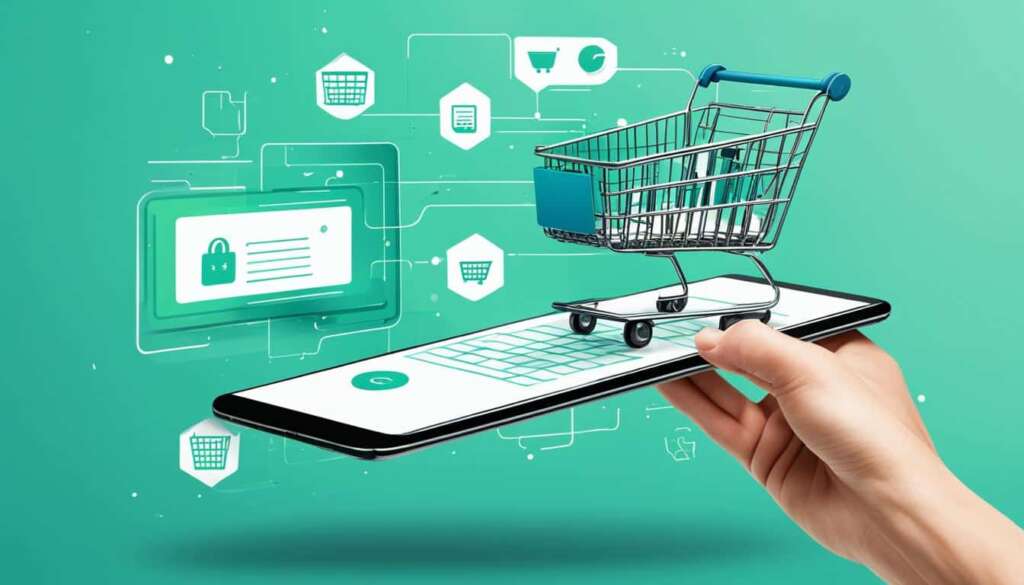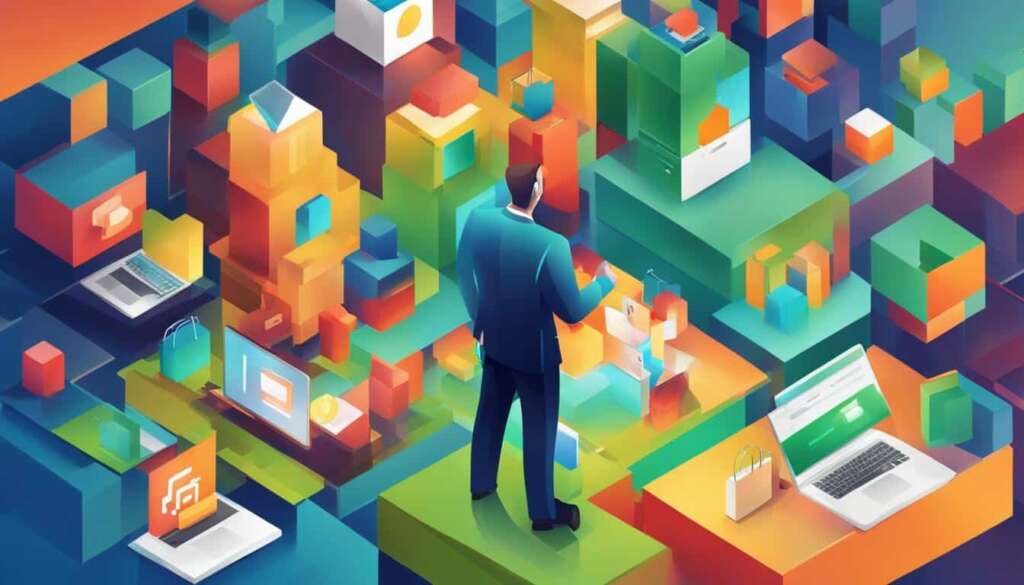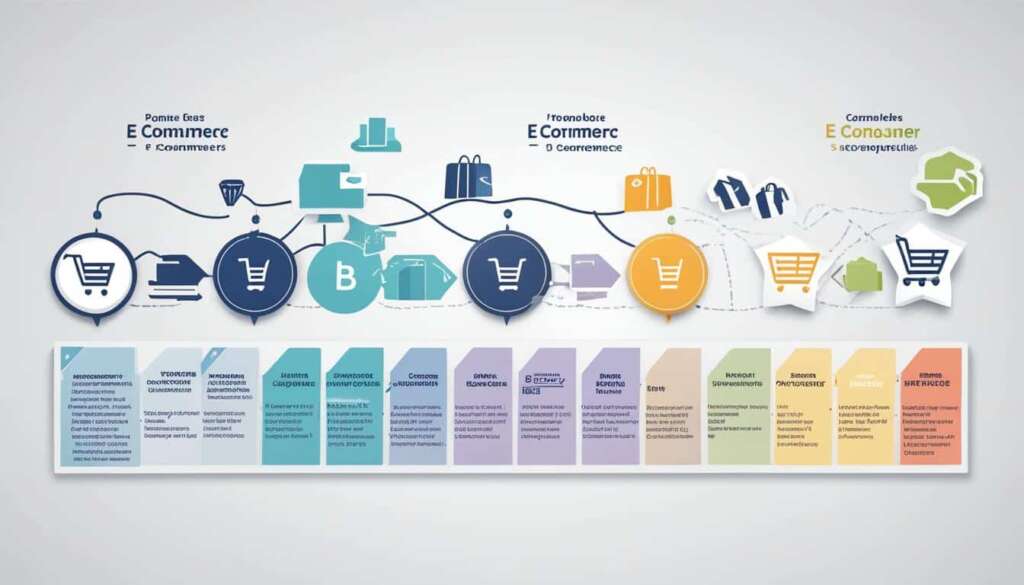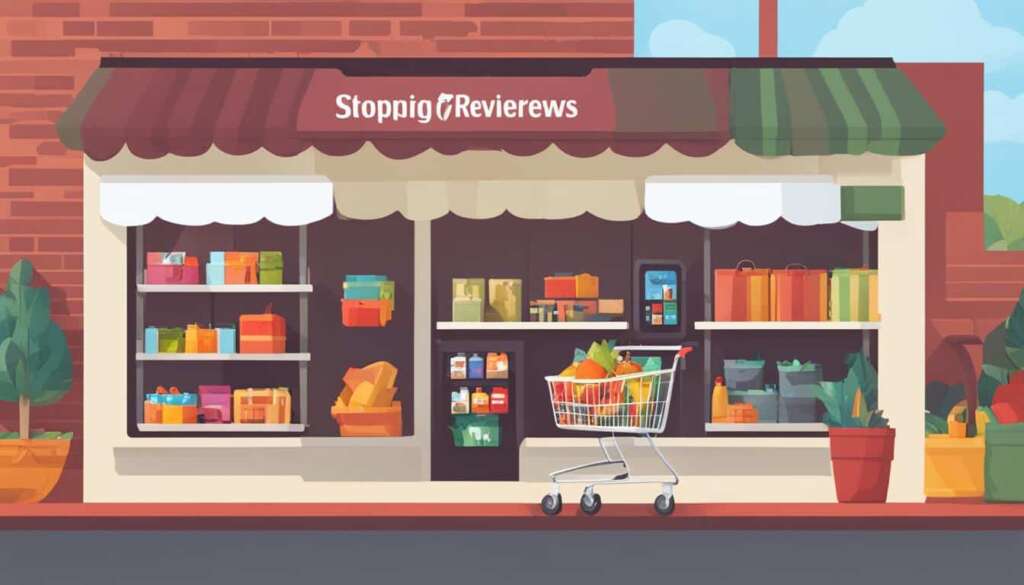Table of Contents
E-commerce, also known as electronic commerce, refers to the buying and selling of goods and services over the internet. It encompasses various types of transactions, including business-to-business (B2B), business-to-consumer (B2C), consumer-to-consumer (C2C), and consumer-to-business (C2B). E-commerce has significantly grown over the years, with platforms like Amazon and eBay contributing to its success. In recent years, e-commerce has accounted for a considerable percentage of retail sales, reaching around 15-16%. The internet powers e-commerce, allowing customers to access online stores, browse products, and place orders. The process involves communication between the customer’s web browser, the e-commerce website’s server, inventory databases, payment processing systems, and shipping or fulfillment departments. E-commerce platforms include online marketplaces, software-as-a-service tools, and open-source tools. Understanding the different types of e-commerce and its advantages and disadvantages is crucial for businesses in today’s digital age.
Whether you’re a consumer or a business owner, understanding the world of e-commerce is essential in today’s technology-driven society. From the convenience it offers to the potential for global reach, e-commerce has transformed the way we shop and conduct business. In this article, we’ll explore the ins and outs of e-commerce, including how it works, the different types of e-commerce, its advantages and disadvantages, the latest trends, and key statistics that shape the industry. So, let’s dive in and unravel the world of e-commerce.
How Does E-commerce Work?
E-commerce, a revolutionary method of conducting business, operates through the internet, enabling customers to access online stores and effortlessly make purchases. The seamless process involves a series of interconnected steps that ensure a smooth transaction for both buyers and sellers.
When a customer decides to make a purchase, their web browser establishes communication with the server hosting the e-commerce website. This connection allows the customer to browse through a vast array of products and services offered by the online store.
Once the customer has selected their desired item and proceeded to the checkout stage, the order details are securely transmitted to various systems involved in the fulfillment process. These systems include inventory databases, payment processing applications like PayPal, and the customer’s bank.
The order data undergoes meticulous validation, ensuring accuracy and preventing any errors or discrepancies. Once the order is validated, the customer receives a confirmation notification, assuring them that their purchase has been successfully processed.
Subsequently, the order data is sent to the warehouse or fulfillment department responsible for packaging and shipping the products. This seamless coordination streamlines the entire logistics process, reducing delivery times and enhancing customer satisfaction.
E-commerce transactions can encompass both tangible and digital products, accommodating a broad range of offerings. Whether it’s a physical item that is shipped to the customer’s doorstep or a digital product that grants them immediate access to services, e-commerce provides convenience and accessibility.
The process of e-commerce is facilitated through various channels, with websites serving as the primary platform for online stores. Additionally, e-commerce has expanded to encompass social media platforms, enabling businesses to leverage their online presence and engage with customers on a more personal level. Online marketplaces like eBay and Amazon also play a significant role in connecting buyers and sellers, further expanding the reach and potential of e-commerce.
Understanding how e-commerce works is crucial for businesses and consumers alike. By navigating the intricacies of online transactions, businesses can effectively harness the power of the internet to expand their customer base and increase revenue. Likewise, consumers benefit from the convenience and accessibility offered by e-commerce, enjoying an effortless shopping experience from the comfort of their own homes.
Facilitating E-commerce Channel
E-commerce operates through different channels, providing customers with diverse avenues to explore and purchase products. These channels include:
- Websites: The cornerstone of e-commerce, websites serve as online stores, providing customers with a user-friendly platform to browse and purchase products.
- Social Media Platforms: Businesses leverage their social media presence to engage with customers and offer products directly through platforms like Facebook, Instagram, and Twitter.
- Online Marketplaces: Popular online marketplaces like Amazon and eBay provide a platform for businesses to showcase and sell their products to a wide customer base.
| Advantages of E-commerce | Disadvantages of E-commerce |
|---|---|
| – Convenient and accessible for both businesses and consumers | – Increased competition from online retailers |
| – Global reach, expanding customer base beyond geographical boundaries | – Potential for fraudulent transactions and security breaches |
| – Reduced costs associated with physical stores and overhead expenses | – Dependence on technology and internet connectivity |
| – Personalized shopping experiences and tailored recommendations | – Lack of physical interactions and tactile experiences |
Types of E-commerce
E-commerce encompasses various types of transactions, catering to different parties involved in the buying and selling process. Let’s explore the most common types:
B2B (Business-to-Business) E-commerce
In B2B e-commerce, businesses engage in transactions with other businesses. This includes suppliers, wholesalers, manufacturers, and distributors who sell products or services to other companies.
B2C (Business-to-Consumer) E-commerce
B2C e-commerce is the most familiar type, where businesses sell products or services directly to end consumers. It involves online retail platforms like Amazon or eBay, allowing individuals to make purchases.
C2C (Consumer-to-Consumer) E-commerce
C2C e-commerce involves transactions between individual consumers. It typically takes place on online marketplaces or platforms, where individuals sell their used goods or services directly to other consumers.
C2B (Consumer-to-Business) E-commerce
C2B e-commerce is less common but gaining popularity. In this type of transaction, individuals or consumers offer products, services, or expertise to businesses. This can include freelancers offering their skills on platforms like Upwork or individuals selling their artistic creations to businesses.
Understanding the different types of e-commerce is essential for businesses to determine the right approach and target their desired audience effectively.
| Type of E-commerce | Description |
|---|---|
| B2B (Business-to-Business) | Transactions between businesses |
| B2C (Business-to-Consumer) | Businesses selling to end consumers |
| C2C (Consumer-to-Consumer) | Individual consumers selling to other consumers |
| C2B (Consumer-to-Business) | Consumers offering products or services to businesses |
Each type of e-commerce brings unique opportunities and challenges, and businesses should carefully consider their target market and objectives to determine the most suitable approach.
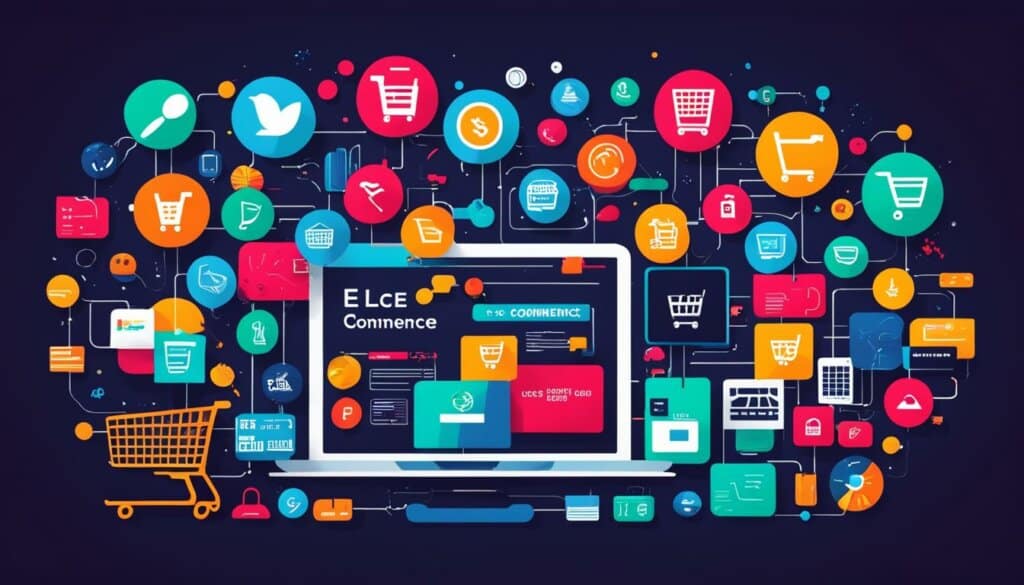
Advantages of E-commerce
E-commerce has become increasingly popular due to its numerous advantages and benefits. These advantages include:
- Convenience: One of the biggest advantages of e-commerce is the convenience it offers to both businesses and customers. With e-commerce, customers can shop from the comfort of their homes at any time, avoiding the need to travel to physical stores. Similarly, businesses can operate their online stores 24/7, reaching customers globally without the restrictions of traditional brick-and-mortar stores.
- Global Reach: E-commerce breaks down geographical barriers, allowing businesses to reach customers around the world. By establishing an online presence, businesses can expand their customer base beyond their local market, tapping into new markets and increasing their potential for growth.
- Lower Costs: Compared to traditional retail stores, e-commerce significantly reduces costs for businesses. With e-commerce, businesses can save on expenses such as rent, utilities, and staffing. Additionally, e-commerce enables businesses to streamline their inventory and fulfillment processes, reducing the need for physical storage space and lowering associated costs.
- Greater Product Selection: E-commerce provides customers with a vast array of product choices. Online stores can offer a wider range of products compared to physical stores, as they are not limited by shelf space or inventory constraints. This extensive selection allows customers to find specific products or niche items that may be challenging to find in traditional stores.
- Personalization: E-commerce platforms allow businesses to collect data on customer preferences and behavior, enabling them to personalize the shopping experience. Through personalized recommendations and tailored marketing campaigns, businesses can enhance customer satisfaction and increase the likelihood of repeat purchases.
E-commerce related image:
These advantages make e-commerce a powerful tool for businesses seeking to reach a wider audience, increase sales, and improve customer satisfaction. By leveraging the benefits of e-commerce, businesses can thrive in the digital era.
Disadvantages of E-commerce
E-commerce has revolutionized the way businesses operate and customers shop, offering numerous benefits. However, it is important to acknowledge the disadvantages and challenges that come with this digital marketplace.
- Security Concerns: One of the major drawbacks of e-commerce is the potential for security breaches and data theft. As transactions take place online, customers are often required to provide sensitive information such as credit card details. This makes them vulnerable to cyber attacks and identity theft.
- Limited Personal Interaction: Unlike traditional brick-and-mortar stores, e-commerce lacks the personal touch of face-to-face interaction. Customers miss out on the opportunity to physically examine products, ask questions, and receive immediate assistance. This can lead to dissatisfaction and confusion in making purchasing decisions.
- Higher Competition: With the ease of setting up an online store, competition in the e-commerce space is intense. Businesses need to implement effective marketing strategies, invest in search engine optimization (SEO), and constantly adapt to changing trends to stay ahead of their competitors.
- Logistical Complexities: Fulfilling orders and managing inventory can be complex and challenging in an e-commerce environment. Businesses need to efficiently handle shipping, order tracking, and returns, often requiring partnerships with logistics providers and additional investments in infrastructure.
Given these disadvantages, it is crucial for businesses to address these challenges proactively and find solutions to mitigate the risks associated with e-commerce.

E-commerce Disadvantages in Detail:
Let’s take a more detailed look at each of these disadvantages:
| Disadvantage | Explanation |
|---|---|
| Security Concerns | The risk of cyber attacks and data breaches can deter customers from making online transactions. Businesses must prioritize cybersecurity measures to protect customer information. |
| Limited Personal Interaction | Without physical stores, businesses must find ways to engage customers online through comprehensive product descriptions, virtual assistance, and responsive customer service. |
| Higher Competition | Online marketplaces are saturated with competitors, making it crucial for businesses to differentiate themselves. Engaging content, personalized marketing strategies, and exceptional customer experiences can help stand out in the crowded e-commerce landscape. |
| Logistical Complexities | Managing inventory, order fulfillment, and shipping logistics is vital for e-commerce success. Building efficient systems and partnering with reliable logistics providers can help overcome these challenges. |
Top E-commerce Trends and Statistics
The world of e-commerce is constantly evolving, and staying updated with the latest trends and statistics is crucial for businesses. Let’s take a closer look at some of the top e-commerce trends and statistics that are shaping the industry.
The Rise of Mobile Commerce (m-commerce)
One of the key trends in e-commerce is the significant growth of mobile commerce, commonly referred to as m-commerce. With the increasing popularity of smartphones and tablets, more consumers are using their mobile devices for online shopping. According to recent e-commerce statistics, mobile commerce accounted for a significant percentage of online sales, with projections estimating further growth in the coming years.
Enterprise E-commerce
Another noteworthy trend in the e-commerce industry is the rise of enterprise e-commerce. This refers to large companies venturing into online sales and establishing their presence in the digital marketplace. By leveraging their brand reputation, resources, and established customer base, these enterprises are capitalizing on the e-commerce boom to reach a wider audience and drive revenue growth.
Social Selling Channels
Social media platforms have become powerful channels for businesses to sell their products directly to their social media audiences. Social selling allows businesses to create engaging content, build relationships with customers, and drive sales through platforms like Instagram, Facebook, and Pinterest. E-commerce statistics show that consumers are increasingly receptive to product recommendations and purchasing through social media, making it a promising avenue for brands.
E-commerce statistics clearly indicate the rapid growth of online sales and the increasing number of people shopping online. The convenience, global reach, and diverse range of options offered by e-commerce continue to contribute to its expansion.
| E-commerce Trend | Key Insights |
|---|---|
| The Rise of Mobile Commerce (m-commerce) | – Increasing number of consumers using mobile devices for online shopping – Mobile commerce accounts for a significant percentage of online sales |
| Enterprise E-commerce | – Large companies leveraging their brand reputation and resources to establish an online presence – Reaching a wider audience and driving revenue growth |
| Social Selling Channels | – Selling products directly to social media audiences through platforms like Instagram and Facebook – Consumers are receptive to product recommendations and purchasing through social media |
As the e-commerce landscape continues to evolve, businesses must stay abreast of these trends and leverage them to innovate their strategies and stay competitive.
Conclusion
E-commerce has revolutionized the way we shop and do business. With its convenience, accessibility, and wide range of products, customers worldwide can easily find what they need with just a few clicks. Not only do individuals benefit, but businesses of all sizes can reach a global audience and reduce costs associated with physical stores.
Although e-commerce comes with its challenges, such as security and trust issues, the advantages far outweigh the disadvantages. It has become an essential part of today’s business landscape, enabling companies to thrive in the ever-changing digital age.
Staying informed about the latest e-commerce trends and statistics is key to success. By embracing trends like mobile commerce (m-commerce), enterprise e-commerce, and social selling channels, businesses can stay ahead and connect with their target audiences in new and innovative ways. The growth of online sales and the increasing number of online shoppers highlight the immense potential and opportunities that e-commerce offers.
Whether you’re starting a new e-commerce venture or expanding an existing one, understanding the nuances of e-commerce is vital. It’s a dynamic and ever-evolving field where adaptability and continuous learning are crucial. Embrace the power of e-commerce and unleash its potential to transform your business operations and reach new heights in the digital world.
FAQ
What is e-commerce?
E-commerce, also known as electronic commerce, refers to the buying and selling of goods and services over the internet.
How does e-commerce work?
When a customer places an order, their web browser communicates with the server hosting the e-commerce website. The order data is then relayed to various systems, including inventory databases, payment processing applications, and the customer’s bank. Once the order is validated, the customer receives a notification, and the order data is sent to the warehouse or fulfillment department for shipping.
What are the different types of e-commerce?
E-commerce can be classified into several types based on the parties involved in the transactions, including business-to-business (B2B), business-to-consumer (B2C), consumer-to-consumer (C2C), and consumer-to-business (C2B).
What are the advantages of e-commerce?
Some advantages of e-commerce include convenience, global reach, cost savings, increased customer access, and a wide range of product options.
What are the disadvantages of e-commerce?
Disadvantages of e-commerce include security concerns, potential for fraud, lack of physical interaction, reliance on technology, competition with established businesses, and shipping and fulfillment challenges.
What are the top e-commerce trends and statistics?
Some top e-commerce trends include the rise of mobile commerce (m-commerce), enterprise e-commerce, and social selling channels. E-commerce statistics indicate the rapid growth of online sales and the increasing number of people shopping online.
Why is understanding e-commerce important for businesses?
Understanding e-commerce is vital for businesses as it allows them to reach a global audience, reduce costs associated with physical stores, and adapt to the digital age. By staying informed about the latest trends and statistics in e-commerce, businesses can thrive in the dynamic online marketplace.

